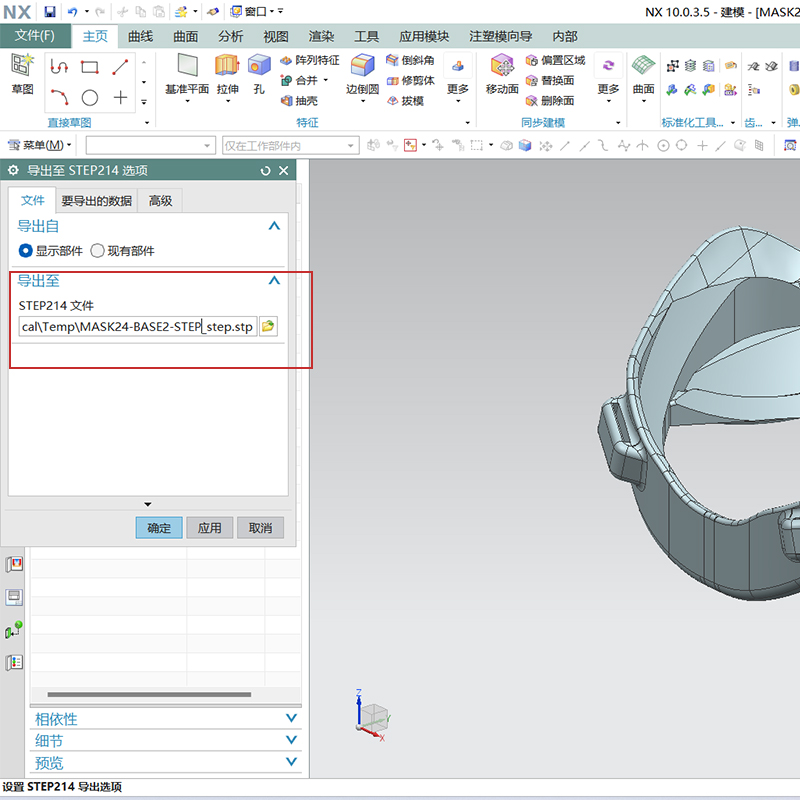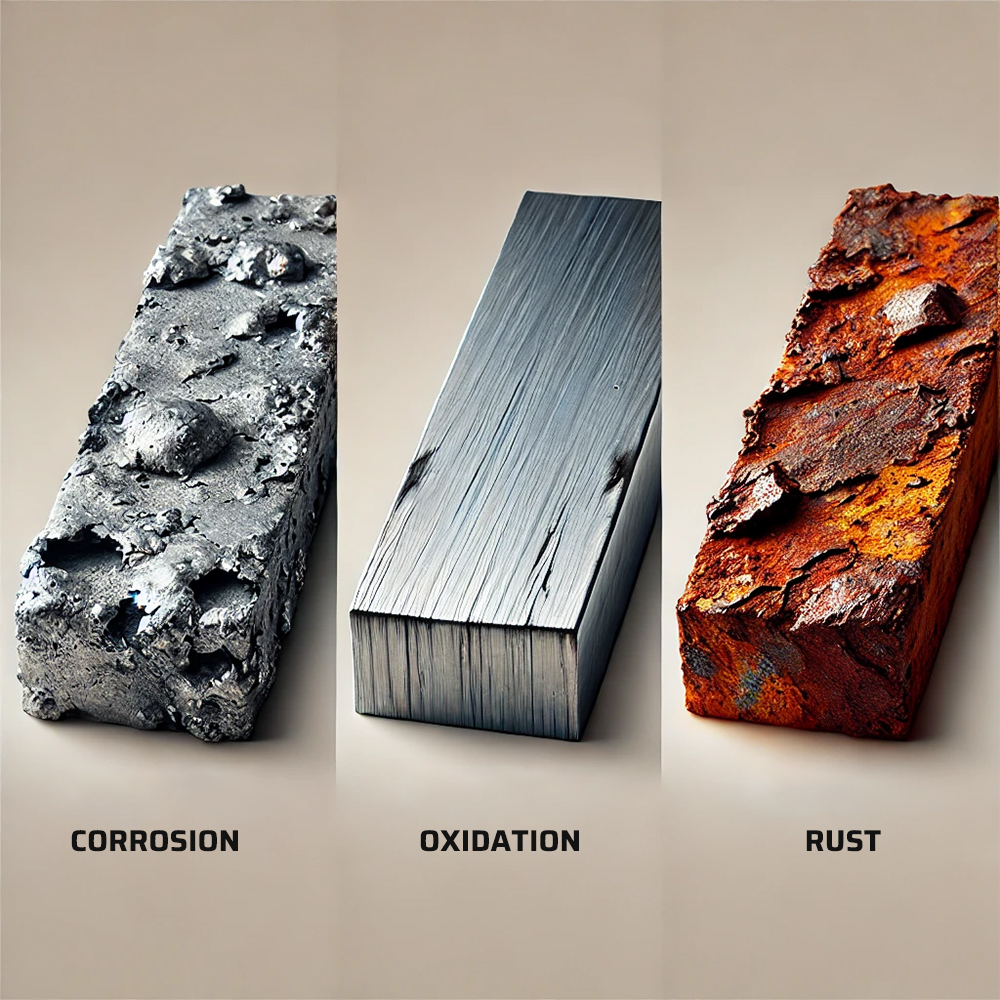A STEP denotes “Standard for the Exchange of Product Data.” It is a file format used not only for computer-aided design (CAD) but also in other engineering and manufacturing processes. It is an impartial interface for transmitting 3D model data between the various CAD systems. STEP guarantees dissemination and access of intricate geometric and nongeometric information without fail across different systems.
STEP files usually, but not always, have “.stp” or “.step” file extensions to store information on the part or assembly and the related data but are not bound by the CAD system. Hence, STEP files are essential in multidisciplinary engineering projects where information is shared among different software applications.
STEP files are relevant in that they work to preserve data consistency and interoperability between different CAD systems. It is vital in demanding sectors like aerospace, automotive, and manufacturing. Since a STEP file is prevalent in almost all CAD programs, engineers and designers can share precise product models without data distortion, ensuring that members working in various software will receive the same accurate set of data.
History and Development: The Evolution of STEP Files from ISO 10303 Standards
The origin of STEP files traces the realization that there was a dire need for a neutral file format to enable product data exchange across different CAD platforms. As a result, the ISO 10303 standard STEP was developed under the International Organization for Standardization (ISO). The initial idea behind the development of ISO 10303 started in the 1990s to provide product support throughout the entire product life cycle. The STEP standard was developed to address the shortcomings of previous formats like IGES, which, despite its widespread use, has limitations in handling complex 3D shapes and assembly data. STEP files became more enriching because they support structure, material, tolerance, and any other description of the products.
STEP files, therefore, have undergone improvement over the years. It has more versions and updates to meet new CAD technologies and the needs of different industries. Step format is the de facto standard for CAD data exchange and is still useful extensively in contemporary engineering and manufacturing industries.
Why STEP Files Matter in CAD
STEP Files Enable Seamless Data Exchange Between Different CAD Systems
One notable benefit of STEP files in the CAD universe is their compatibility between different CAD platforms. Interoperability means how two or multiple software systems can exchange information and use data from other systems. This is very important in the modern engineering world, where multidisciplinary engineering systems occur.
As various organizations and teams employ different CAD applications for their requirements, the problem of transferring intricate 3D designs without distortion or data loss is feasible. STEP files mitigate this problem as they are a universal neutral file format for easy reading and writing to almost all modern CAD systems.
The standard step file format has many advantages over proprietary file formats. It is highly compatible with different software that deals with CAD. This means it is easy to open and modify the data in the step files without compromising its quality by the software of the user’s choice. This is especially useful for projects that involve several people, such as designers and engineers who may use different software but need to work on the same model as manufacturers.
Industry Adoption: Overview of Industries That Rely on STEP Files for Their CAD Needs
STEP files’ use is widespread across various industries, particularly those requiring accuracy, collaboration, and intricate product design. Some of the important sectors that rely heavily on STEP files include:
Aeroespacial
In aerospace applications, parts and assemblies are geometrically intricate and sensitive to tolerance. STEP files are mandatory in these sectors and have many applications. They allow all the contractors and suppliers to work together on one project, and at the same time, each works on their own CAD system by providing consistent and accurate designs.
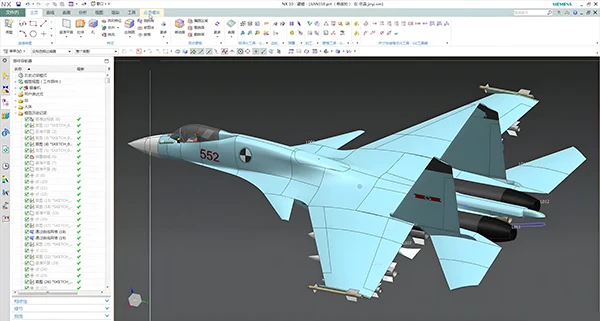
Automoción
Manufacturers and suppliers in the automotive industry use STEP files because the exchange of designs between them can be done irrespective of the different systems. STEP files are helpful for the design, prototyping, and production cycle. They allow designers to share evolving vehicle elements with high degrees of precision.
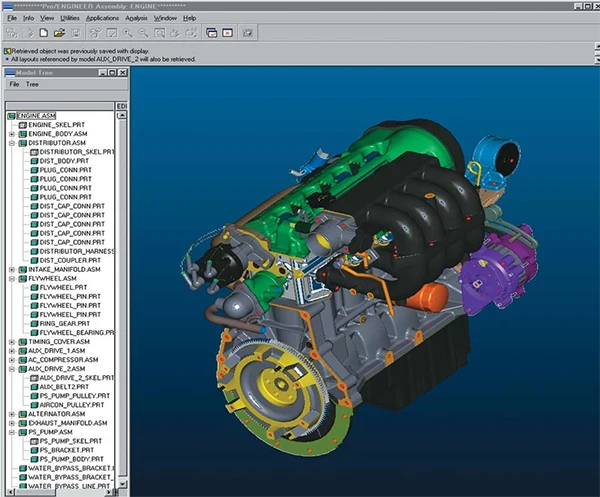
Fabricación
STEP files are a crucial, valuable medium in manufacturing, especially in industries requiring machinery and tools. They facilitate the transition from actual design to production. They ensure that each detail, from the parts to the assembly level, can be easily described by the CNC machines and other manufacturing tools.
Electrónica de consumo
The high-turnover consumer electronics sector uses STEP files to address the intricate structures of products with numerous components and materials. STEP files help coordinate design and interact with the design teams, prototyping facilities, and mass production lines. These are possible while observing that all the minor details remain from the conceptual stages to the final product.
Construcción y arquitectura
In architecture, engineering, and construction (AEC), STEP files help deal with the interoperation of constructing components and systems in 3D models. A clear example of this can be seen in BIM, where precise 3D models are crucial for integrating numerous trades and disciplines in construction projects.
Productos sanitarios
Another area where STEP files are helpful is the medical device industry. They help transfer intricate geometries of equipment and implants, especially when the design differences may be life-threatening.
Key Features of STEP Files
STEP files are renowned for carefully preserving accuracy and dealing with geometric data quantities. This is especially important in aerospace, automotive, and manufacturing industries, where minor errors may cause significant problems during assembly.
STEP files are particularly effective in rendering geometric shapes, including curves, surfaces, and solids, with the ability to retain their dimensions and spatial positioning. This guarantees that exporting models to another CAD system does not lead to distortion. The ability to process 2D and 3D information only proves the necessity of using the STEP file format. It is crucial to check designs’ accuracy at various product life cycle stages.
Besides maintaining the accuracy of shapes, STEP files provide a rich set of capabilities to handle virtual assemblies, individual components, and related information. It is easy to model and export assemblies of other sub-assemblies with different interconnectivity in STEP files. This is because they store information about parts’ positioning or connection. It is crucial to comprehend the concept of assembly of components in an end product.
How STEP Files Work
Structure and Components: Breakdown of the Internal Structure of a STEP File
STEP files capture intricate product information, and their internal structure reflects this reality. STEP is a neutral file format conforming to an ISO 10303 standard. Here’s a breakdown of the critical components of a STEP file:
- Header Section: The header is the STEP file section describing the STEP file itself: when it was created, what version of STEP it uses, and which software created the file. By so doing, it prepares a map that can be used to decode the data that is included in the file.
- Schema: In STEPS, a schema describes the structure and the types of data that may be contained in a file. The schema defines all the objects and how they are associated, for instance, shapes, material characteristics, or assembly arrangements. Many STEP schemas currently in use are AP203, Configuration Controlled 3D Designs, AP214, core data for Automotive Design, and AP 242 and Managed Model-based 3D Engineering.
- Entity Definitions: STEP files contain the product information in the format of entities where the ‘entity’ means different product characteristics. For instance, entities may encompass geometric elements (points, curves, surfaces), structural components (parts, assemblies), and descriptor attributes (material characteristics, tolerances). It involves describing each entity by its attributes and the relationship between two or more entities.
- Geometry Representation: Some entities and data structures are helpful about the product’s geometry. This comprises two-dimensional and three-dimensional shapes like polygons, splines, and curves, which are critical in reproducing the product’s design on the digital plane.
- Assembly Information: STEP files contain assembly schemes for the models with components divided into parts. This includes the location, alignment, and configuration of the parts of the other assembly components. This is necessary for easy reconstruction of the model in different CAD systems.
- Metadata: STEP files contain further information on the product, like mechanical characteristics of the material used, processes of production, and even specifications of construction. This metadata is essential to ensure the product’s design is understood at all the product development and use phases.
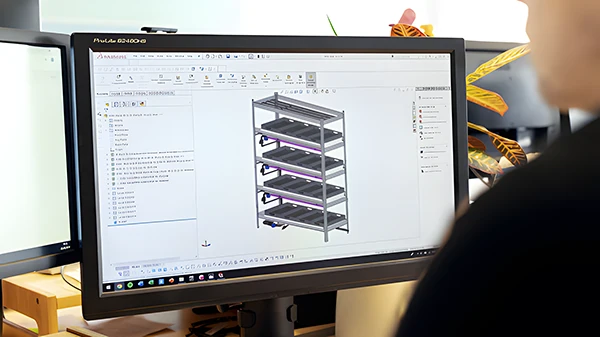
File Extensions and Variants: Common File Extensions (.stp, .step) and Their Specific Uses
STEP files are visible because they have specific file extensions signifying their format and function. The popular file extensions include .stp and .step. They are interoperable and applicable according to user preference or specific application demands.
- .stp: This is one of the most popular file extensions for STEP files and is helpful in many CAD systems for import and export operations. The file extension ‘.stp’ means the file is compatible with STEP and helps translators interchange CAD data.
- .step: Similar to the ‘.stp’ format, this extension is helpful for the same purpose and depends on multiple CAD applications. It is typically essential in situations with some ambiguity that needs clarity from the STEP file. While some CAD systems or specific software documentation may use ‘.step’ for the file extension, the data format corresponds to ‘.stp.’
Comparison with Other CAD Formats
STEP vs. IGES: Differences in Usage, Capabilities, and Industry Preference
IGES and STEP are the most popular methods to transfer CAD data. However, they differ in applicability, functionality, and widespread use in different industries. IGES (Initial Graphics Exchange Specification) is one of the oldest CAD exchange formats since the 1970s. It transfers geometric data between CAD systems. However, IGES could be more efficient in notating complex, contemporary models. It must also work more effectively with 3D models, assemblies, and intricate metadata. The essential tools of IGES conform to 2D drawing and simple 3D surface rendering. Therefore, it is ineffective in industries that demand high accuracy and intricate part modeling.
The design of STEP resulted from the weaknesses of IGES. Since its existence in the 1990s, it has been substantially more capable. It can represent structures, assemblies, contexts, and many other forms of metadata, including materials lists and manufacturing information. Consequently, STEP has emerged as the industry standard, particularly in the aerospace, automobile, and manufacturing industries, which require more detailed product data. It is often helpful for the last generation of applications or as a more straightforward system.
Comparison Table of STEP and IGES Files
| Aspecto | STEP | IGES |
| Year of Introduction | 1990s | 1970s |
| Primary Usage | Complex 3D models, assemblies, detailed metadata | Simple 2D drawings, basic 3D surfaces |
| Complexity Handling | High – Capable of representing detailed 3D geometries, assemblies, and complex relationships | Limited – Best for simpler 2D designs or bare 3D surfaces |
| Metadata Support | Extensive – Includes material properties, tolerances, and manufacturing instructions. | Minimal – Focuses primarily on geometric data |
| Industry Preference | Aerospace, automotive, manufacturing, and other sectors requiring detailed and accurate product data | Mainly used in legacy systems or for more straightforward design tasks |
| Data Integrity | High – Preserves geometric and metadata accuracy across different CAD platforms. | Moderate – This can result in data loss or inaccuracies when handling complex models. |
| File Extensions | ‘.step’, ‘.stp’ | ‘.igs’, ‘.iges’ |
| Standardization | ISO 10303 – Recognized as the modern standard for CAD data exchange | Initial exchange standard, now largely replaced by STEP in many applications |
STEP vs. Native CAD Formats: When to Use STEP Files Instead of Native Formats
Native formats are particular to SolidWorks, AutoCAD, or CATIA programs. They are the most extended and operate at the maximum level of compatibility within their corresponding environment. These formats enable designers to embrace all aspects of a particular CAD system. However, Native CAD formats create various problems. They exclusively belong to a specific company, and interactions between CAD systems can be a significant issue. Every CAD software that is typically in use may utilize its proprietary file format. This means data exchange between the systems can cause compatibility problems, data loss, or data file conversion problems.
STEP files solve these challenges since they are non-proprietary data formats interoperable across various CAD systems while maintaining data accuracy. Native formats are perfect when designing and developing within an organization. STEP is suitable for external collaboration with partners, clients, or suppliers who may utilize different CAD systems. Using STEP files, all parties are sure to work on the same correct data, even using other CAD systems. This makes STEP files very useful in many industries and related projects where switching between different platforms and sharing data is needed.
Comparison Table of STEP and Native CAD Files
| Aspecto | STEP Files | Native CAD Formats |
| Funcionalidad | Neutral format supporting various CAD systems | Highly functional within specific CAD software |
| Integration | Designed for interoperability across different CAD platforms | Integrated deeply with specific CAD tools |
| Advanced Features | Primary support for geometric data and metadata | Full access to software-specific features like parametric modeling and version control |
| Colaboración | Ideal for external collaborations, facilitating data exchange across different systems | Best suited for internal use within the same software environment |
| Data Integrity | Maintains data integrity across platforms but may not leverage all advanced features | Ensures high data integrity and utilizes advanced features within its ecosystem |
| Complexity Handling | Adequate for complex models and assemblies but limited in specialized features | Fully optimized for handling complex designs with advanced tools |
| Conversion Issues | Minimal – Standardized format reduces conversion problems | Significant – Proprietary formats may require complex conversions and can lead to data loss or inaccuracies |
| File Extensions | ‘.step’, ‘.stp’ | Varies by software (e.g., ‘.sldprt’ for SolidWorks, ‘.dwg’ for AutoCAD) |
| Geometric Accuracy | High – Typically within 0.01 mm precision for 3D models | Very High – Up to 0.001 mm or better, depending on software capabilities |
| Metadata Handling | Extensive – Can include up to 50 types of metadata fields (e.g., material properties, tolerances) | Extensive – Tailored to the software, often includes advanced metadata like version control and custom attributes. |
| Data Size and Performance | File size can vary; typical sizes range from 1 MB to 50 MB for complex assemblies. | Typically smaller files, sizes range from 0.5 MB to 20 MB, optimized for software performance. |
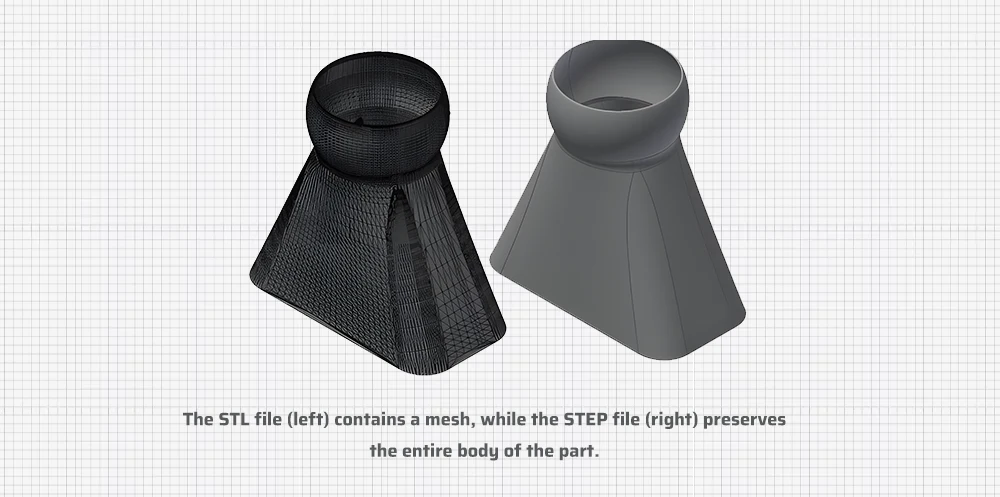
Conclusión
STEP files are one of the critical data exchange formats in modern CAD, ensuring the highest level of data exchange and information compatibility. These files allow engineers and designers to work together on multiple projects with great detail, irrespective of whether or not they are utilizing the same CAD software. They have evolved from the ISO 10303 standards to become the most suitable in the market compared to previous formats. Although native formats of CAD software perform well within their environments, STEP files are essential for exporting and importing CAD data from outside environments without distorting data in the process. STEP files will always be necessary as industries evolve, and global integration remains a crucial factor in engineering and manufacturing processes.
